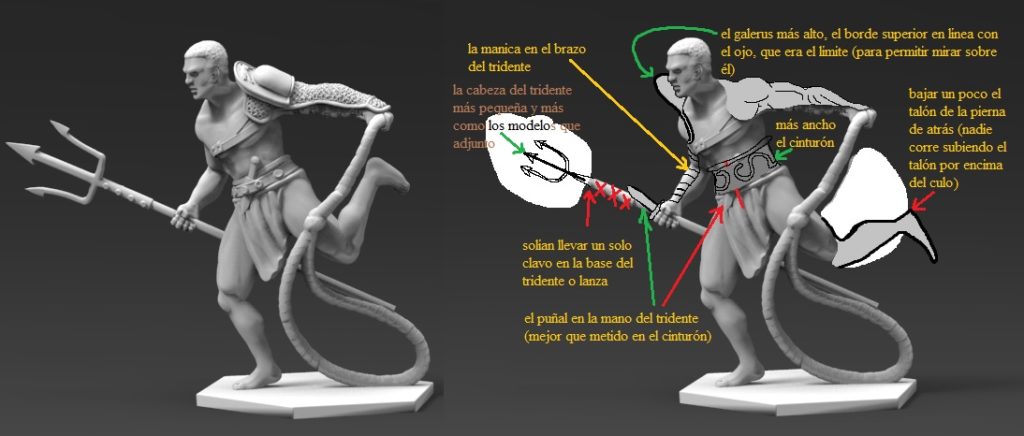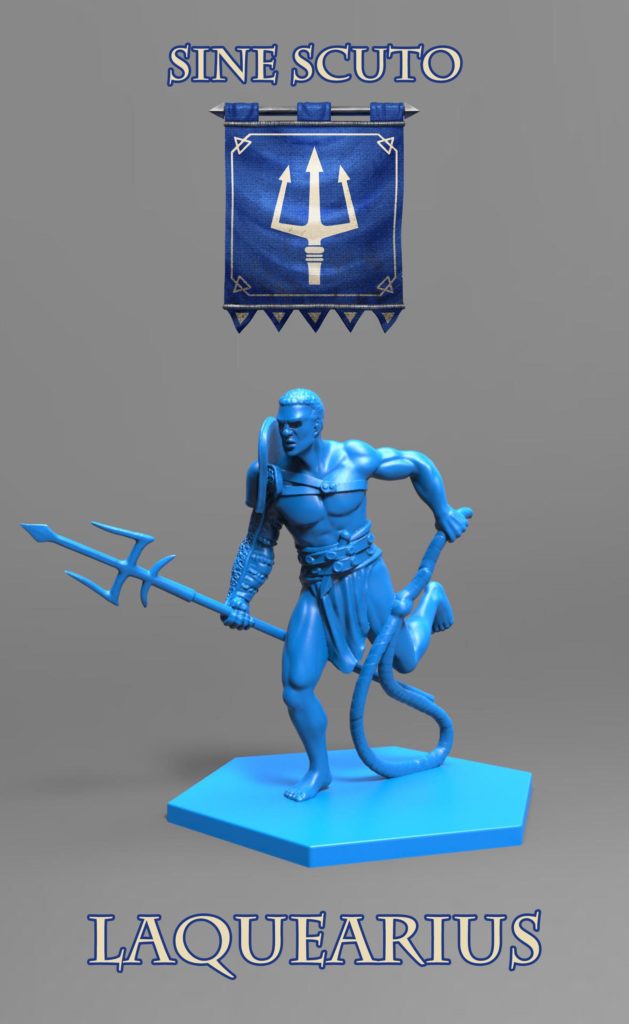
laquearius
He is gladiator similar to the retiaria, but he changes the net for a lasso (laqueus) that can also knock his enemy down, but is easier to use than the net. He can use it to attack his enemies from a great distance and avoid the counterstrikes. He is the less popular gladiator in the Sine Scuto team.
He starts at Level I with Throw the Lasso, a versatile special attack that allows him to move one hex (usually to flee), and at the same time, knock down and push one enemy (except big ones). At Level II, he gains Lassoing, a special skill that allows him to attack any foe in a 3-hex radius (long weapons can only reach 2 hexes away, and only the Paegniaria can attack from so great a distance), but the attack is completely wasted with a single Fumble. He can’t advance to Level III.
Excerpt from the glossary of GLADIATORIS, checked by Alfonso Mañas.
Design process
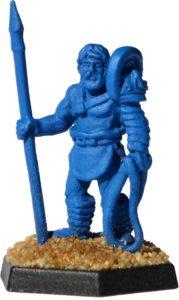 Maybe saying he’s the “less popular Without Shields gladiator” is an understatement: the Laquearius was chosen as the worst gladiator at the survey we made during three years of Ludi Pucelae leagues. The reasons: he can only get to Level II, and the Retiaria and the Dimachaerus, his team comrades, are two of the best gladiators in the game. To sum it up, if he goes into the Arena, it’s always because of a failure with the sortitio roll…
Maybe saying he’s the “less popular Without Shields gladiator” is an understatement: the Laquearius was chosen as the worst gladiator at the survey we made during three years of Ludi Pucelae leagues. The reasons: he can only get to Level II, and the Retiaria and the Dimachaerus, his team comrades, are two of the best gladiators in the game. To sum it up, if he goes into the Arena, it’s always because of a failure with the sortitio roll…
When we started the design process, we had the chance to pay homage to the brilliant Draba from Kubrik (Spartacus, Stanley Kubrick, 1960). We also took world champion Usain Bolt as inspiration.
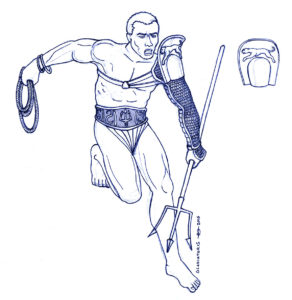
We abandoned our idea for a “funny” stance, and chose instead an ambiguous one: he’s running, and he can be either attacking (as the Retiaria) or fleeing (“splitter!”). Also, fleeing was a typical strategy for these light gladiators, who tried to wear their heaver opponents with heavy shields down. We armed him with a manica hamata, a chainmail like Draba’s, with the galerus overlapping as an additional reinforcement (and decorated with the blue tea’s Leopard).
Alfonso Mañas’ notes on the Laquearius.
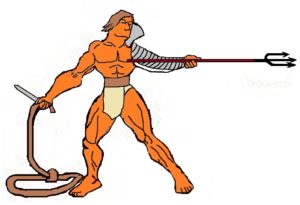 Alfonso: “That trident with the exterior tips outwards (identical to Draba’s) is not accurate regarding the ones preserved, or the ones we see on the sources.
Alfonso: “That trident with the exterior tips outwards (identical to Draba’s) is not accurate regarding the ones preserved, or the ones we see on the sources.
The subligaculum isn’t accurate either.
I’ve never seen rings on the wrist on any source either.”
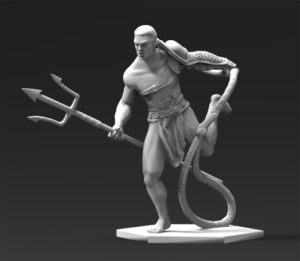
In the first 3D detailed model, the sculptors changed the weapon hand, and went back to the outward tips trident… but Alfonso, patient, corrected it again.
Alfonso: “Yes, David. It’s not possible to change the weapons arm if you don’t change the manica as well. We suppose the laquearius fought like a retiarius (since they evolved from them) and the manica was a disadvantage when using the lasso. Therefore, the manica was worn in the trident’s arm, and the hand holding the trident would also hold the dagger.”
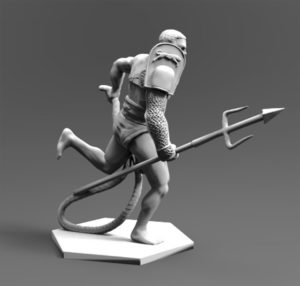 When choosing between changing hands or the galerus back again (that looked great in their new position) the sculptors opted for the second option.
When choosing between changing hands or the galerus back again (that looked great in their new position) the sculptors opted for the second option.
The second trident model was not great, so we decided to copy the small trident from the Museum of London. That said, we’re working with a 25 mm miniature, so we stuck to the big-sized tips (even the museum’s webpage doubts that such a small trident could be useful).
And the Laquearius was ready!
[slideshow_deploy id=’1420′]

